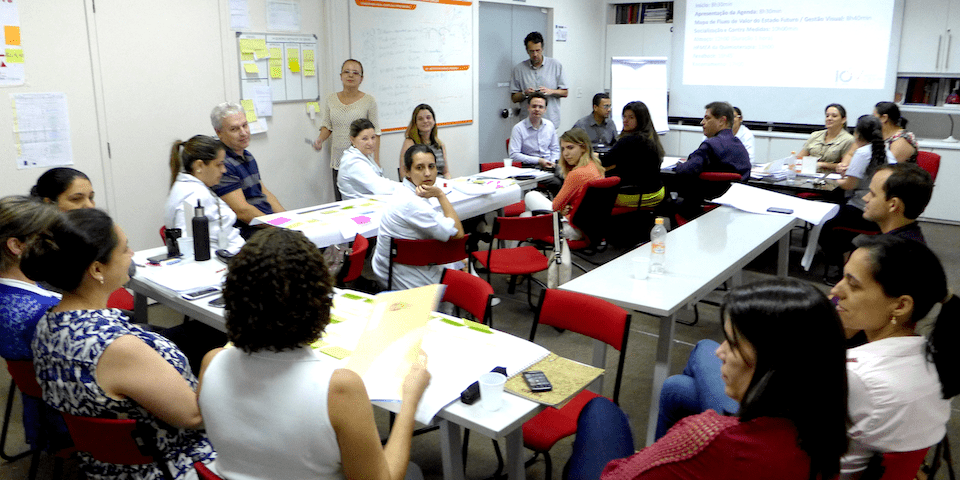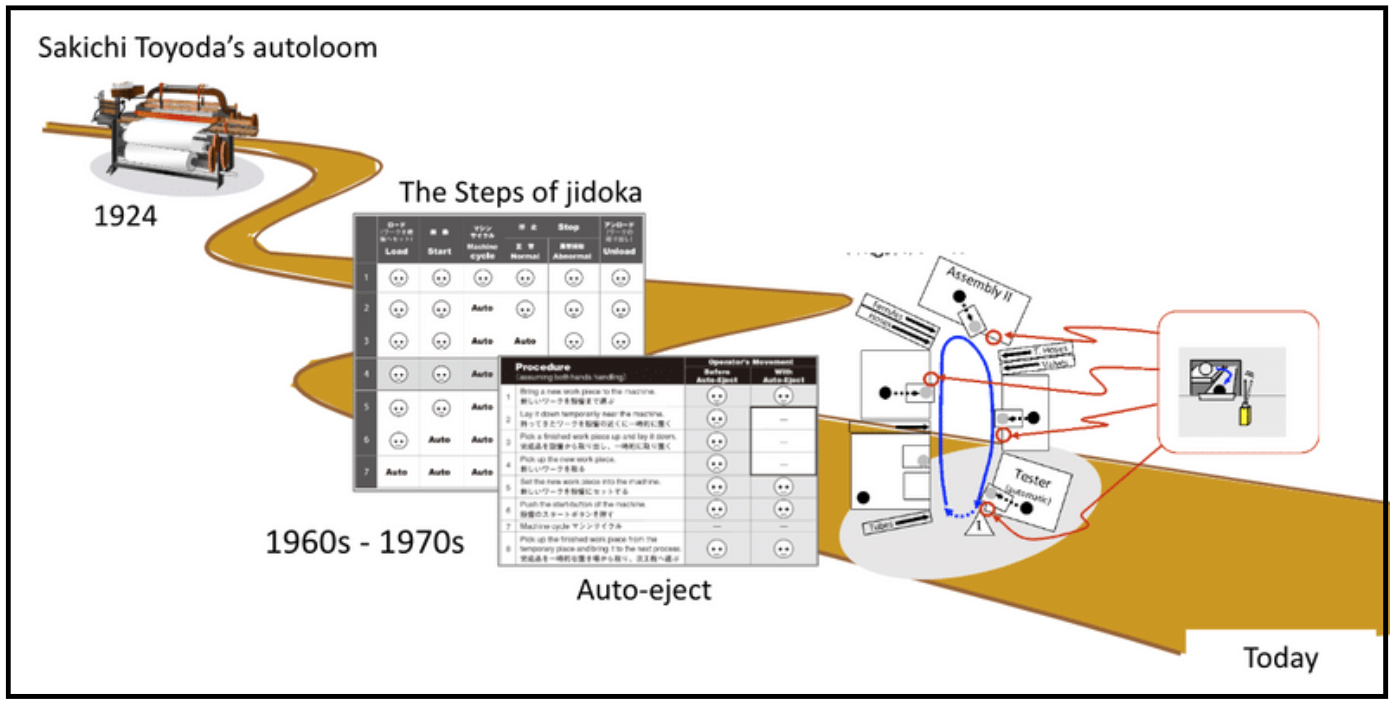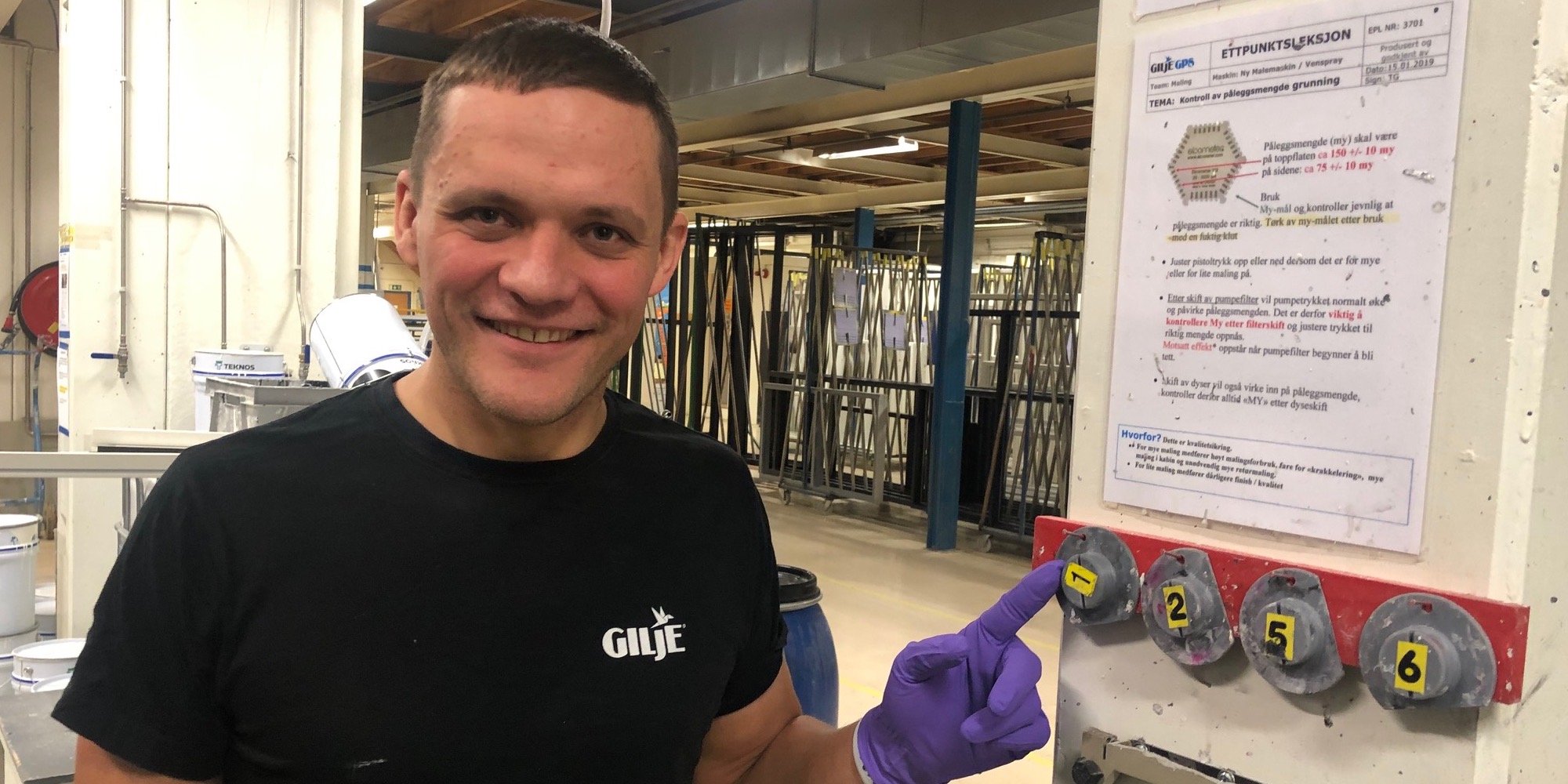
The formula behind the success of Toyota
INTERVIEW – What is the secret to Toyota’s ability to engage people in continuous improvement? Tracey and Ernie Richardson look back at their time with the company and tell us.
Interviewees: Tracey and Ernie Richardson, lean coaches and authors
Interviewer: Cecil Dijoux, lean coach, Institut Lean France
Photo credit: Bhakpong / Shutterstock.com
During the last couple of decades, our understanding of lean thinking has grown a lot. We now know that lean is a production and a management system that creates people who are able to think and learn about the work to be done.
A lot has been written about lean, and there are loads of excellent books out there. However, I must say that Tracey and Ernie Richardson’s The Toyota Engagement Equation – How to Understand and Implement Continuous Improvement Thinking in Any Organisation is somehow unique, because it offers an insider’s perspective into how Toyota turns regular people into deep thinkers.
Drawing on their experience working at Toyota, Tracey and Ernie set out to boil what they learned about how the company creates engagement down to an equation:
GTS6 + E3 = DnA
I will let you read the book to find out what these elements are. For now, I will say the book is full of great insights and precious advice. It also happens to be a wonderful read, full of telling anecdotes that explain the nuts and bolts of Toyota culture.
For me, the biggest discovery was the role the lean practice of nemawashi – engaging everyone in getting to a solution – plays in creating the culture that supports Toyota. As an example, Tracey explains that, when she was coached on an A3, his coach would not only look at the result of the experiments and the disciplined thinking behind these, but also at how she managed to engage everyone in carrying out the experiment leading to the improvement.
I was lucky enough to have the opportunity to ask Tracey and Ernie a few questions about their book. The full version of this interview can be found on my blog.
Cecil Dijoux: What was the main reason behind your decision to write The Toyota Engagement Question?
Tracey Richardson: The thought of putting together a book came to me about 12 years ago. We wanted to describe our 30-year gemba journey from an inside perspective at the first Toyota plant in TMMK (Kentucky). Many of the trainers who influenced us at the beginning had connections to Taiichi Ohno and the Toyoda family, and we felt very blessed to be part of this historic point of time, absorbing every ounce of knowledge we could. The learning was captured mostly from the gemba, experiencing successes and failures (mostly failures in the beginning) that allowed us to learn a great deal about assumptions versus facts.
Ernie Richardson: Tracey and I wrote a lot in the book about capturing the learning from the hourly position (team member and team leader) and development process into leadership positions. Toyota has a very unique approach – which most aren’t willing to replicate – of a leader to team member development ratio of 1 to 5, meaning that throughout all levels of the organizations (from President to team member) there was one leader responsible for five team members. Often times, this could be 4 to 7 depending upon the complexity of the area or amount of decision made as well as critical process areas. I believe this was a key factor behind the success of our culture of people development: you were not overwhelmed each day with having to manage 25+ people on your own. In a world where a car comes off the line every 57 seconds (give or take), you must rely upon the extraordinary brain-power your team has that you are helping develop and foster each day.
CD: The thing that struck me most in the book in how your Toyota coaches insisted on having everyone on board as part of a kaizen activity. Can you please elaborate on the importance of nemawashi?
TR: Early on in our Toyota career, it was established that developing people was the biggest challenge for us leaders. We had to help not only one person, but the whole team to achieve success (all the functional areas vertically and horizontally). It is hard to be successful at Toyota if the entire team doesn’t see through the same lens from a strategy deployment perspective. We always need to think about these questions when change is made to a process: what impact does it have on other people? What about the bigger picture? How much time does it take for other people to understand the situation/new standard? Our responsibility was to understand the full extent of the problem we were fixing. We would then coach the people to continue to develop their skills.
ER: Another approach was the Quality Circle program with (mostly) team members and team leaders selecting team-based problems that affected their KPIs. Other avenues were with individual or team-based suggestions through our suggestion system, which had criteria to meet and measurements to show impact.
I learned a really important lesson – I talk about it in greater detail in the book – when my Japanese trainer had me document my daily interactions. He would always ask me first, “Who did you develop today?” and then, “What did you learn today?” The questions are related to two concepts: 1) servant leadership and 2) reflection or hansei. After several years documenting my learning and the team members’, I was able to visualize and internalize my own growth and development. It was really powerful and I understood “the why” behind it all. I recommend that for folks who are now learning, both as coaches and coachees.
CD: From a practical standpoint, how do you apply nemawashi?
TR: The meaning of Nemawashi is metaphorical and it revolves around the idea of “prepping the soil” before planting a tree. In other words, if we invest in our people upfront, if we listen and understand, then we can build mutual ever-growing trust with leadership – just like the growth of a tree. At Toyota, we didn’t experience a “convincing” environment, but an “engaging” one. People have a voice. It was always part of whatever improvement we had going on at all levels. This is a foundational process to help us in every facet of the business. It helps us to come together a little bit faster than other companies. Even if it’s not perfect, we learn together. People think nemawashi is time-consuming and that there is not enough time to get everyone’s opinion. However, if you think about all the rework that occurs because of lack of communication, you will understand why it’s so important to invest in people engagement up front.
CD: Yet, as a management practice, nemawashi seems to be overlooked quite often in the lean literature…
ER: It is often hard to understand what you can’t experience first-hand. From our perspective, The Toyota Engagement Equation offers a different perspective compared to other lean books. It is written from the point of view of two newbies going on a 30-year learning journey, with trials and tribulations and many priceless lessons taught to them by their Japanese trainers during a unique time within Toyota. We try to replicate a process/equation that describes a very dynamic and synergistic culture that isn’t easily replicable (not because it’s complex, but because it requires discipline and accountability).
TR: Yes, we consider the book to be very unique, in that it was written by two people who had zero experience in automotive and whom Toyota was able to condition to think differently. Over 75% of the hires had no previous experience, actually. The book explains how they did it. Many companies trying to transform themselves often have the desire to improve, but lack the discipline and accountability necessary for standardization, visualization, people development and problem solving. At Toyota, you can’t not follow the standard. It’s an expectation of your job until you find a new best practice together with the team. It may sound harsh – and I will admit that in the beginning it was hard for me too – but in time we grew to appreciate and embrace it.
CD: Ernie, at one point in the book you tell the story of how you met Mr. Fujio Cho during one of his visits. What was that like?
ER: When I heard that Mr. Cho was walking over to Powertrain from the main plant, I was a bit concerned – even though I had no reason to think I was “in trouble”. Actually, it was quite the opposite, Mr Cho came to grasp the situation in person and find out what I needed (a true servant leader). He then shook my hand and said, “Thank you, Ernie-san, for shutting the line down. We will get this problem fixed now!” I was a bit surprised at first, but after reflection I realized that was the type of President he was, a person who always put people development first.
CD: Did it ever feel overwhelming to work with coaches who always looked for another challenge to present you with?
TR: When I first started, the learning curve was steep for me. Nothing ever seemed good enough for the coaches and they pushed us very hard at times. Some of my early thoughts were “Why isn’t this good enough? We met expectations!” or “Why are we always changing?” We had to take responsibility for making change even when we were doing very well as a team. We sometimes had small celebrations for our successes, but this never became the norm. We all eventually embraced this environment, because we understood the purpose and the importance of always keeping our competitors in the rear-view mirror.
One of the stories I share in the book is about a time my Plastics team met all the expectations with our KPI board being all green. Of course, I was ecstatic and getting caught up in the moment – perhaps celebrating a little too long. So, one of the Japanese coordinators came down to the floor and asked me a number of questions. I thought that everything was okay, looking confidently at the visual board, but then he said: “Please tell me about your board.” And I said, “Everything is green! We are doing very good.” And then I realized the mistake I had made and thought, “Oh no! I didn’t just say that, did I?” It’s easy to get sucked into the vortex of results and lose focus on the processes. The trainer said: “Tracey-san, it’s too easy.” As a leader, it’s your responsibility to raise the bar and create yellow and red situations for yourself. If it’s all green, it’s because you haven’t challenged yourself and your team enough. We must never get complacent and we always have to look at the next challenge.
CD: Another epiphany I had while reading your book was the difference between lagging and leading indicators. Can you please explain the difference?
ER:Leading indicators are about predicting something before it happens. Leading is the process. If I only react using lagging indicators, I’m always going to be in firefighting mode. Leading indicators help understand the current situation. A good example is sports. If you look at soccer, the coach doesn’t go to the bar and watch his team play on game day. He or she remains on the field to understand the dynamics of the game in real time. They are looking at the process, making adjustments each minute if necessary, to continually influece the outcome. If they don’t, they may lose. The teams that look at real-time actions and adjust the best have the best chances for success. Leading indicators measure the process to see the gaps before the next process or customer finds them. A company that loves problems should be focusing on leading indicators.
THE INTERVIEWEES

Read more


FEATURE – The power of cross-pollination: learning from a manufacturing company has helped a cancer treatment center in Brazil to thrive in its lean transformation.


FEATURE – In the first piece of a series on Takehiko Harada’s contribution to TPS, the authors discuss the Nagara Switch and how it helps to achieve better Jidoka.


FEATURE ARTICLE – By adopting lean thinking and establishing a dedicated care pathway, a Brazilian hospital has been able to drastically reduce the time breast cancer patients have to wait to undergo surgery or start treatment.


CASE STUDY – The story of this Norwegian window and door manufacturer shows how a deep and ongoing commitment to a lean transformation can help a company thrive against all odds.

